Obscurity: life inside the smoke
World Forestry Center
Sept 1–Dec 31st 2023
Exhibition curated by Erica Meryl Thomas & Roger Peet
Contributing artists: Amirah Chatman, Santigie & Sapata Fofana-Dura, Roger Peet, Erica Meryl Thomas, and Alex Wiseman
The Earth Itself is an Instrument of Labor
Erica Meryl Thomas
Silkscreen Prints 18” x 24” & Installation
Kozoshi paper and construction card stock, charcoal, transparent acrylic ink base, steel desk (found), wood, graphite
Each fire season hundreds of inmates in Oregon state prisons are deployed to fight wildfires, performing grueling manual labor through the smoke and heat, putting their lives at risk to protect life and property. In the rainy season they perform forestry work, gathering brush piles to burn for fuel reduction, replanting and salvaging timber for private sale; both preserving and remaking the forests. All this is done for a wage of under 10 dollars a day, much lower than civilian firefighters make per hour to do the same work, although they work side by side. To most on the outside, this labor and the people who perform it remain unseen. The formerly incarcerated wildland firefighters interviewed for this project described their complex feelings about this labor as being both unfree and coercive, but also offering a chance at redemption.
Images of workers were provided by former firefighters, and images of burn sites were taken by the artist during visits to those sites. Ink for the prints, both large format and correspondence cards, was handmade by the artist from charcoal gathered at wildfire burn sites from 2020-2023 in Oregon, northern California, and southern Washington. Some of those collection sites are depicted in the landscape prints, at locations where these same incarcerated firefighters have worked.
Exhibition visitors are asked to write a message to one of the incarcerated wildland firefighters, and place it in the mail slot. Near the end of the exhibition they will be delivered and installed as a mirrored miniature exhibit in the South Fork Prison Camp (men) mess hall and sent to individual inmates at Coffee Creek Prison Camp (women) who wish to receive mail. At the conclusion of the exhibition inmates will be offered the prints and corresponding handwritten messages to keep.
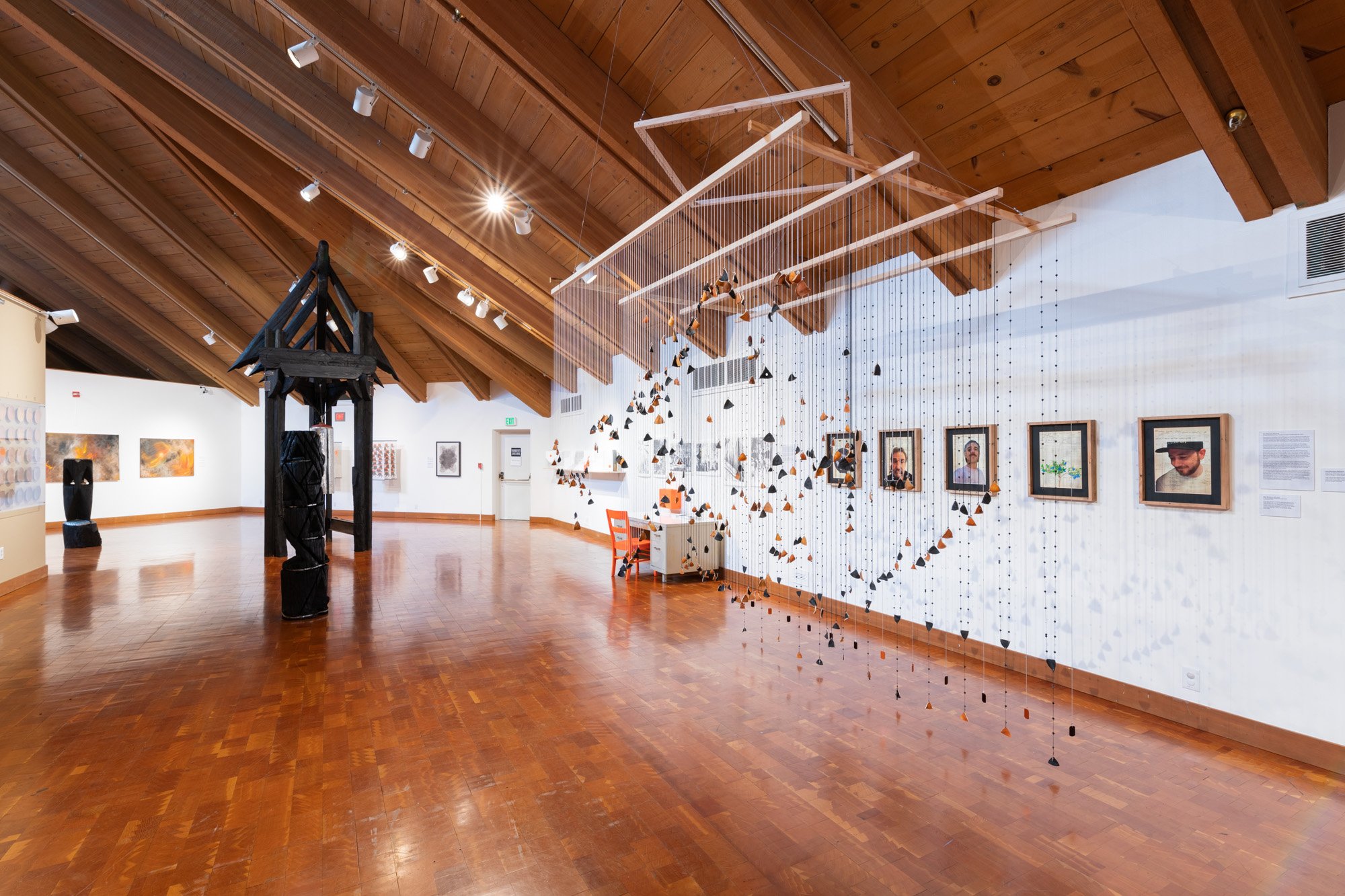
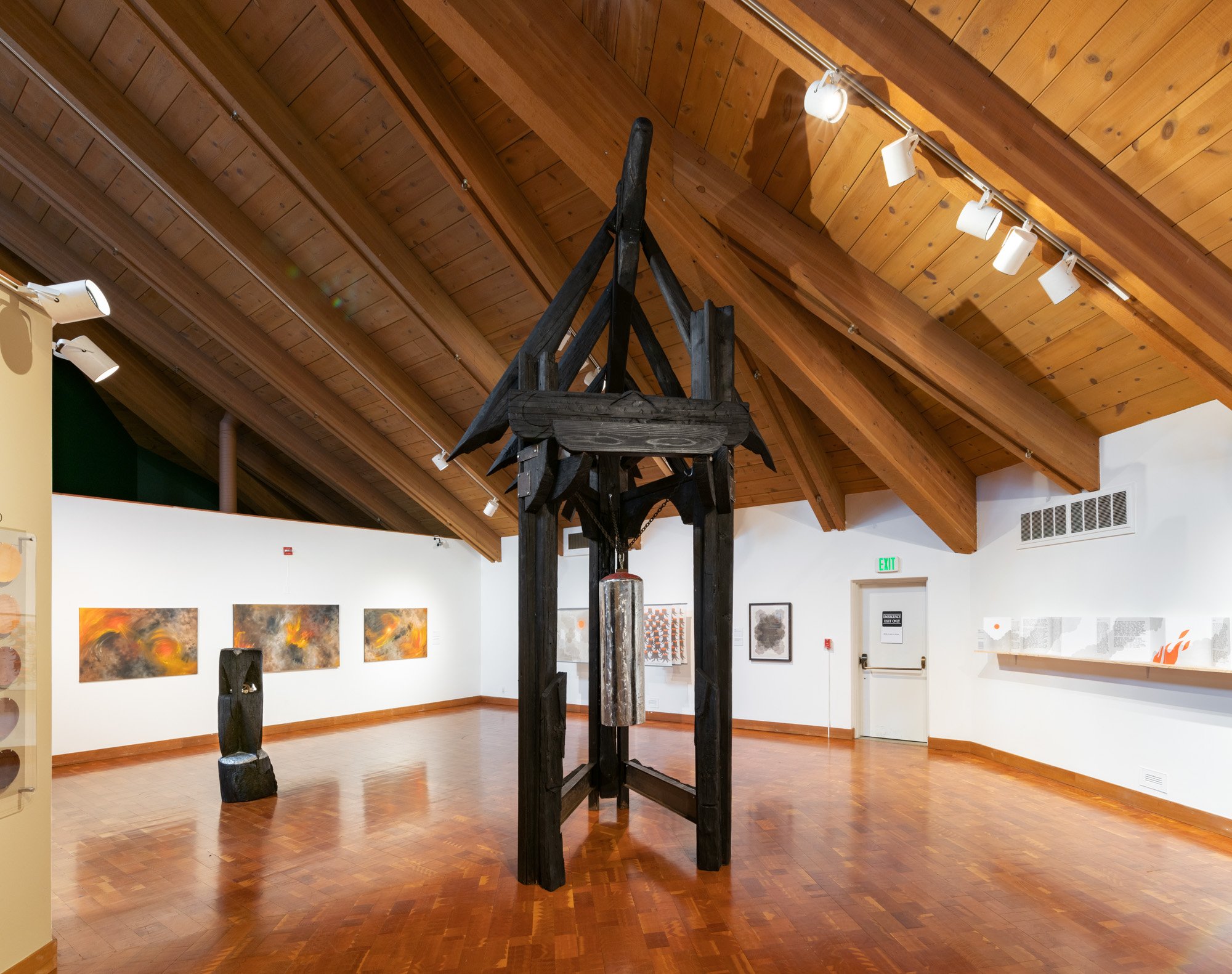

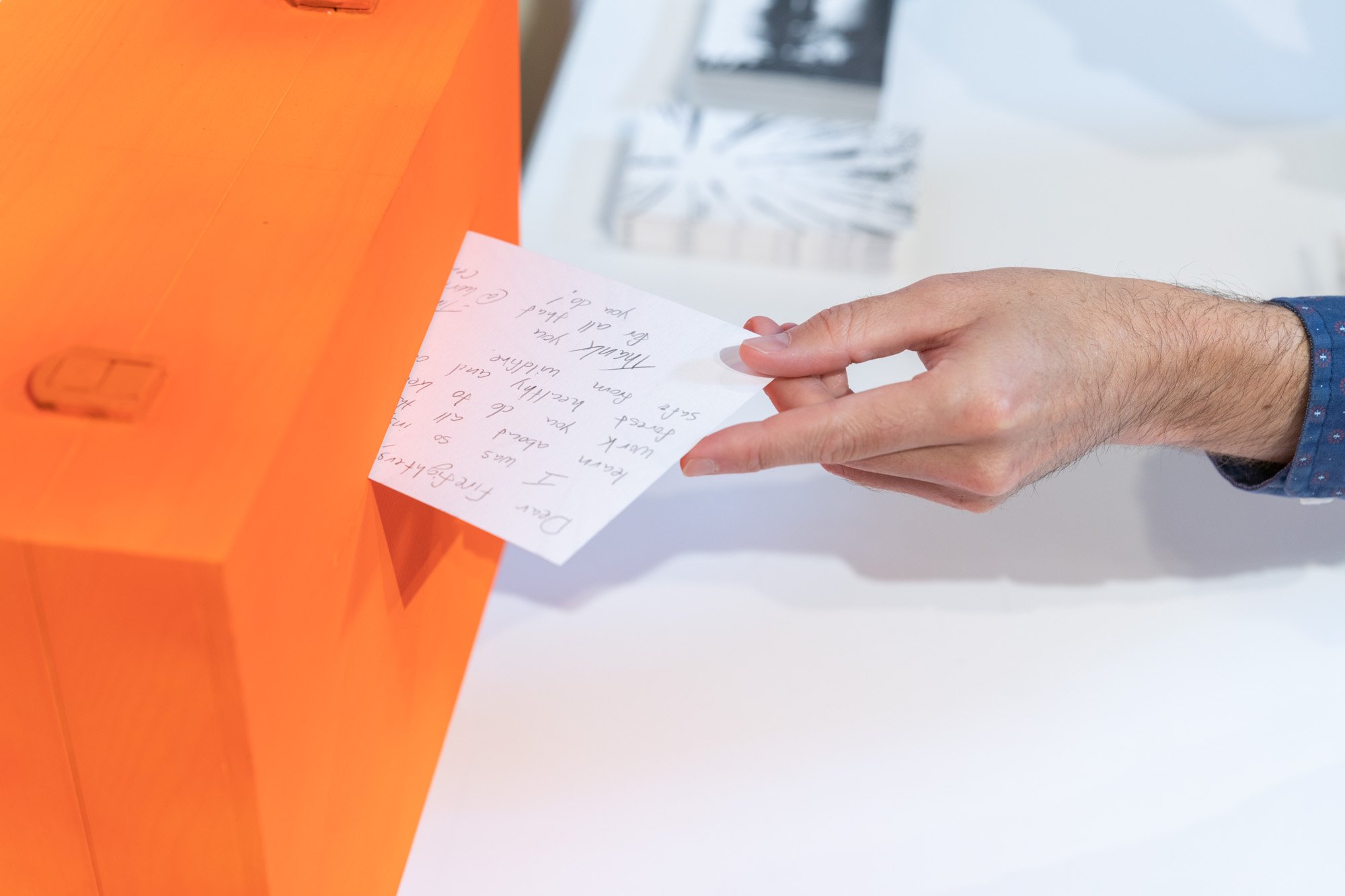
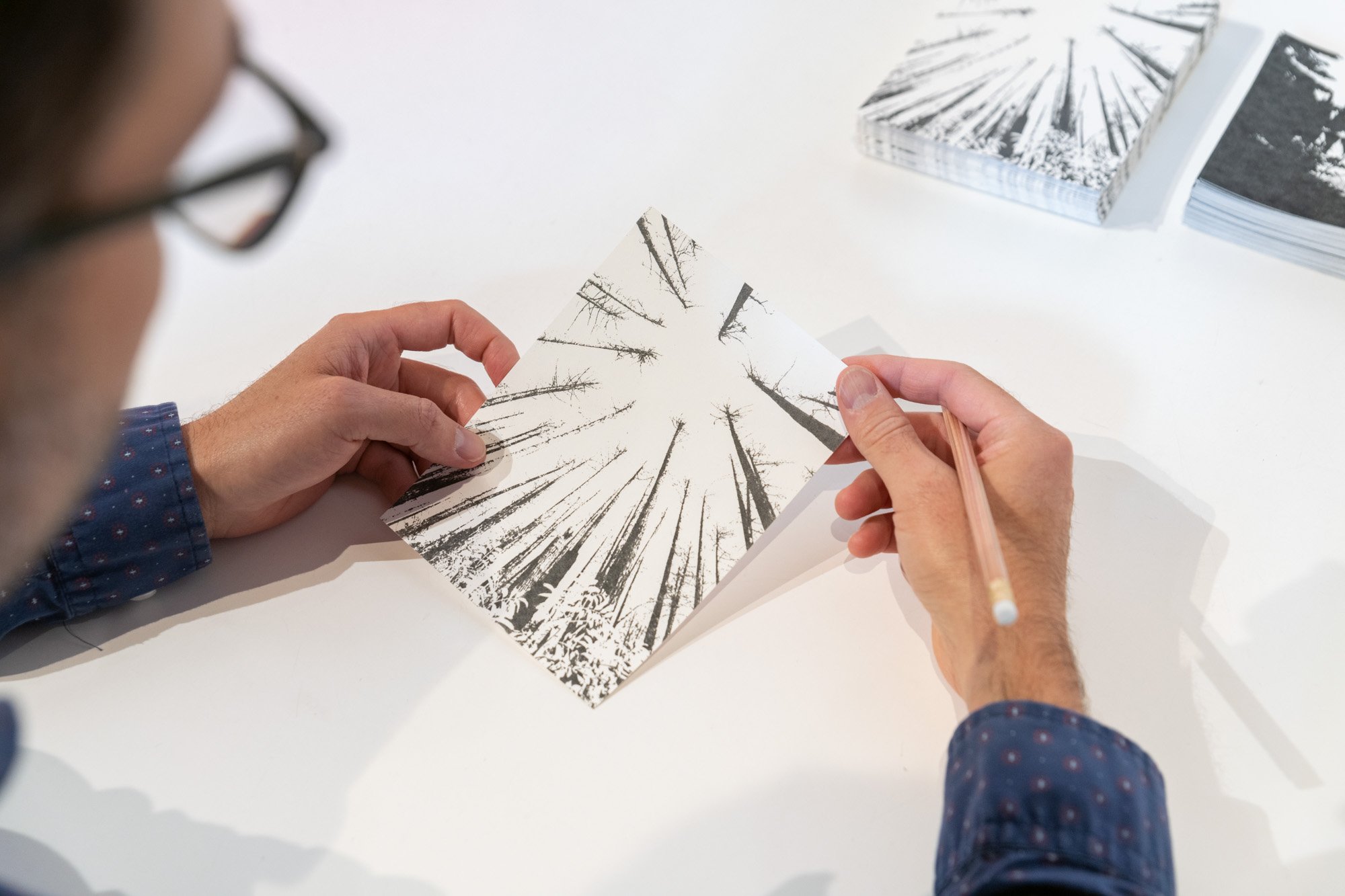

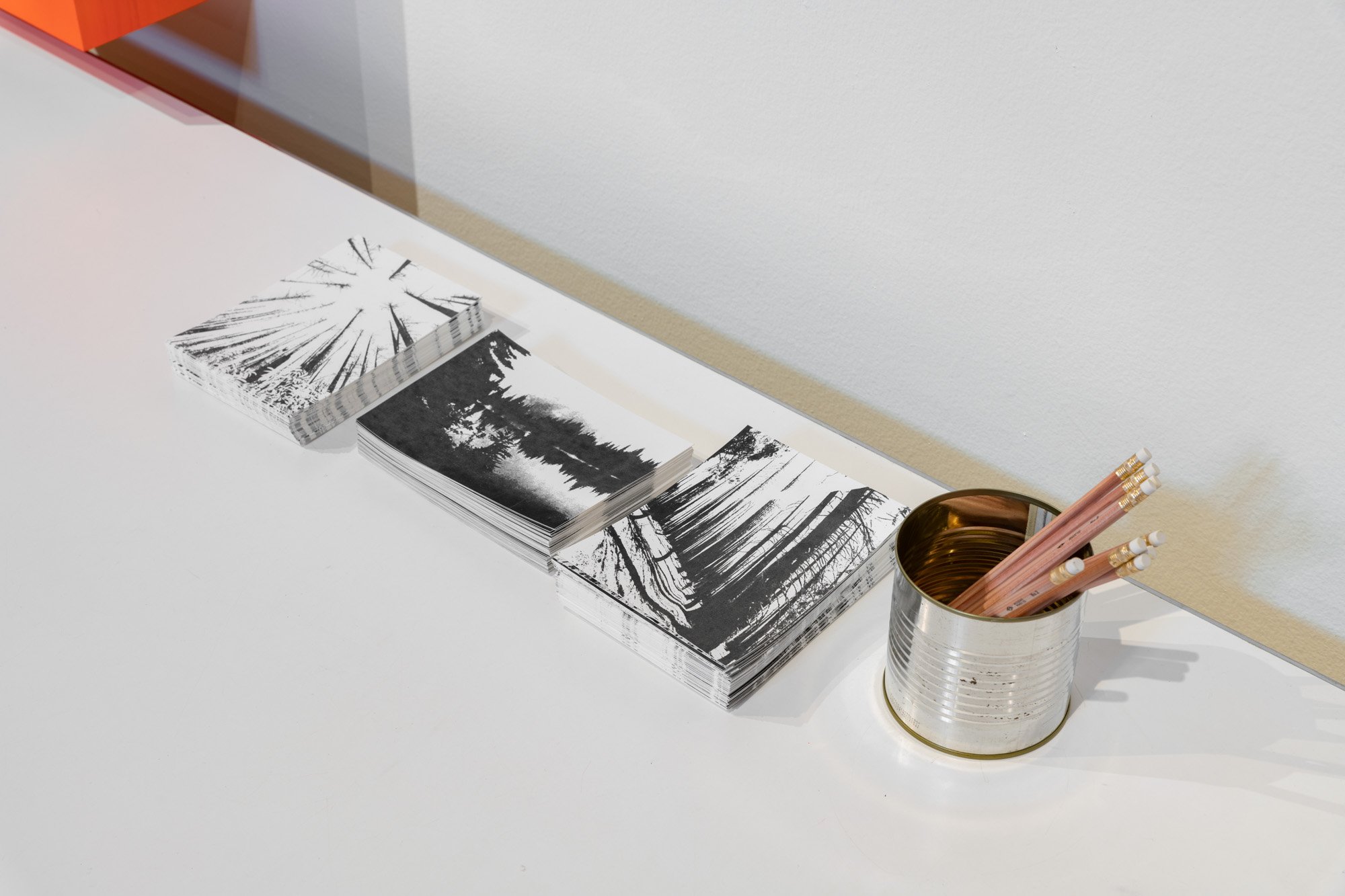
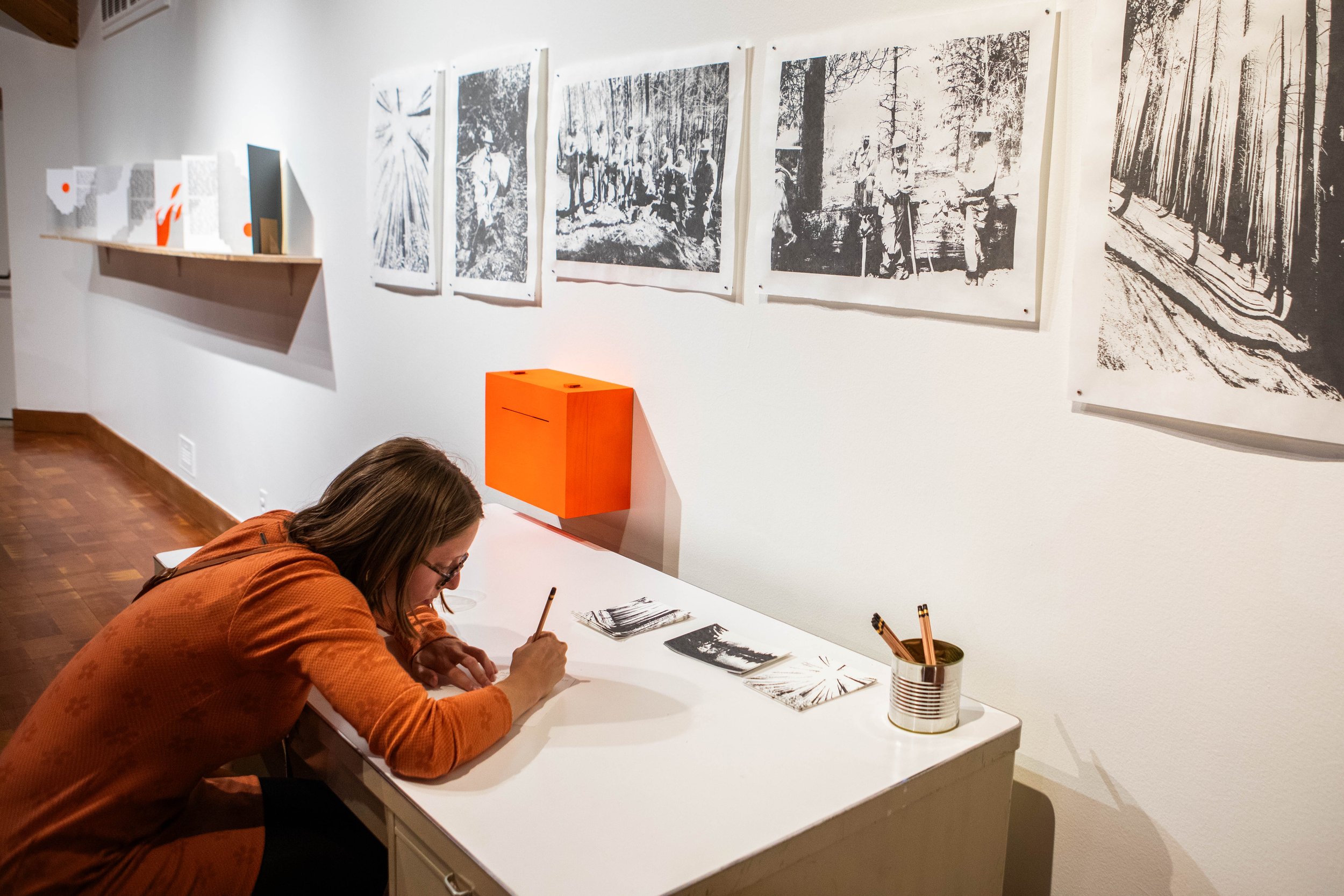
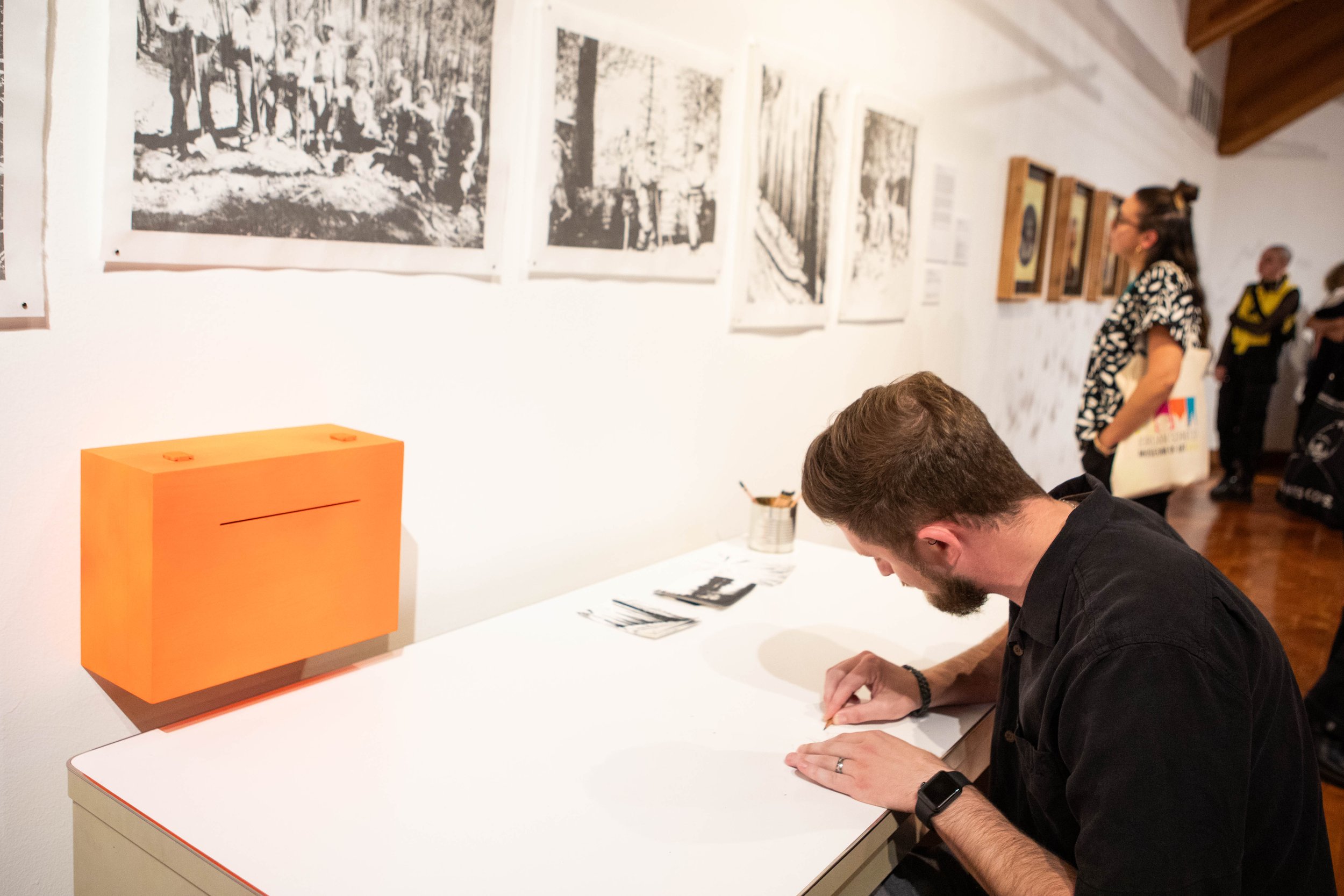
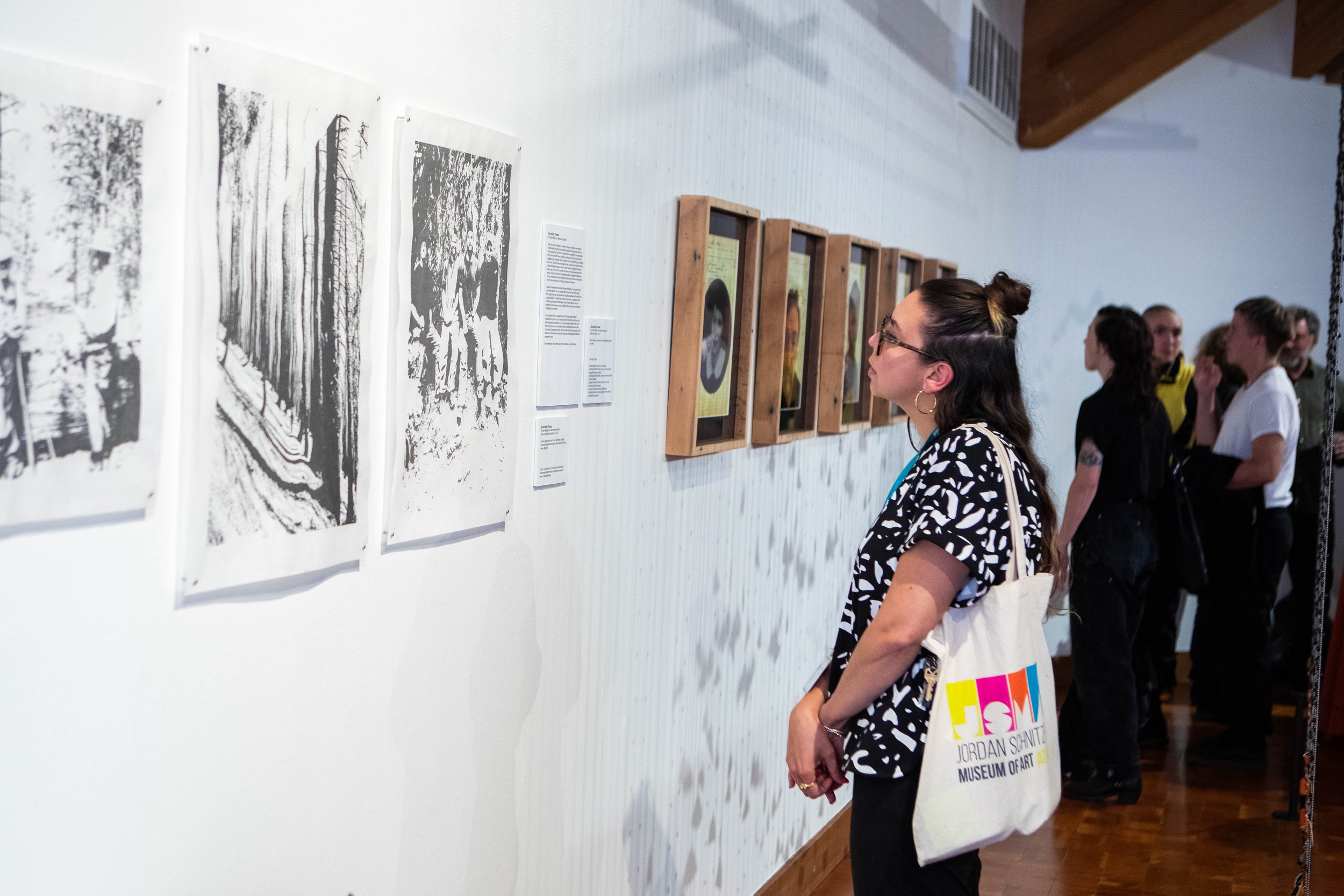
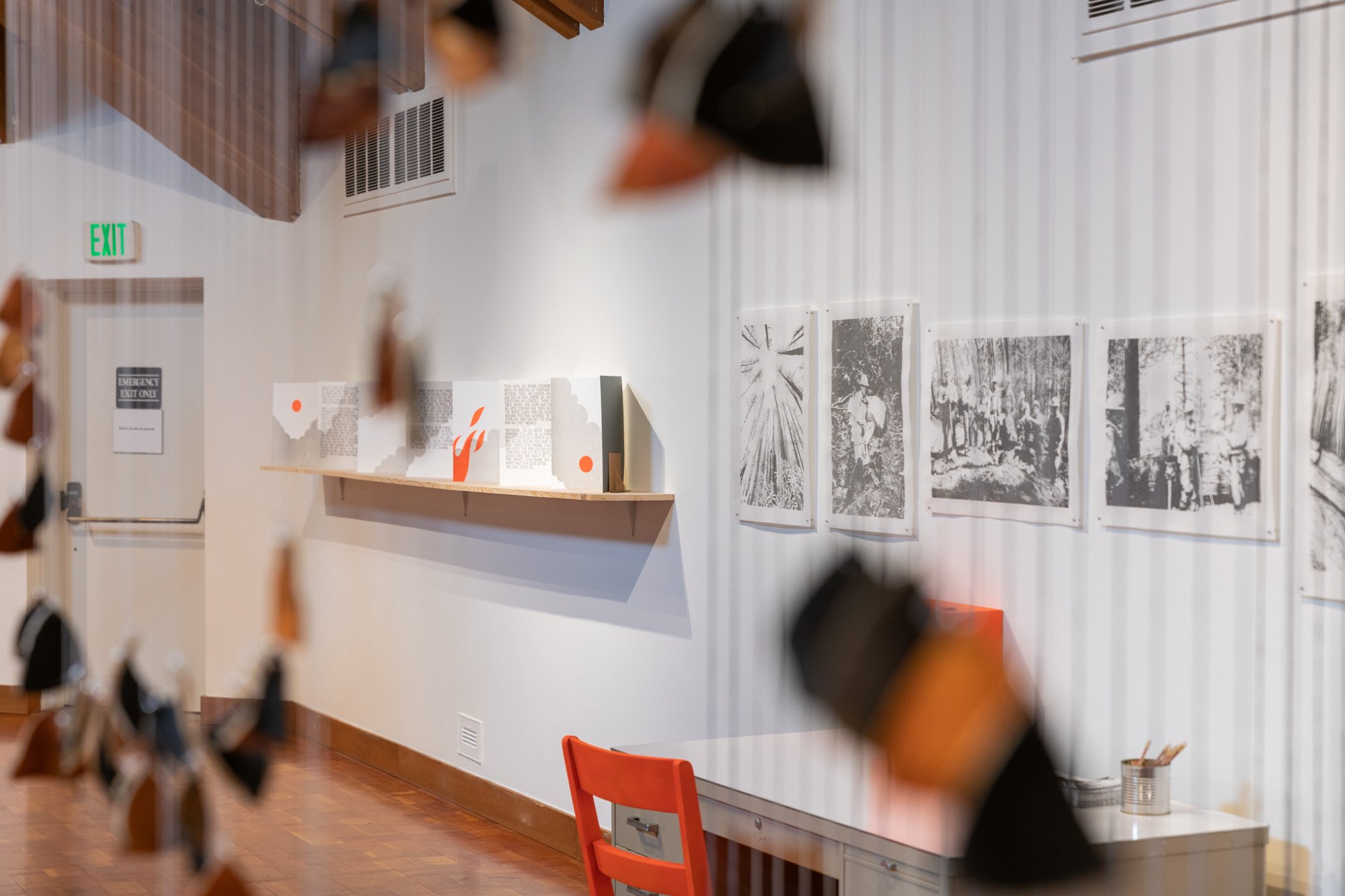

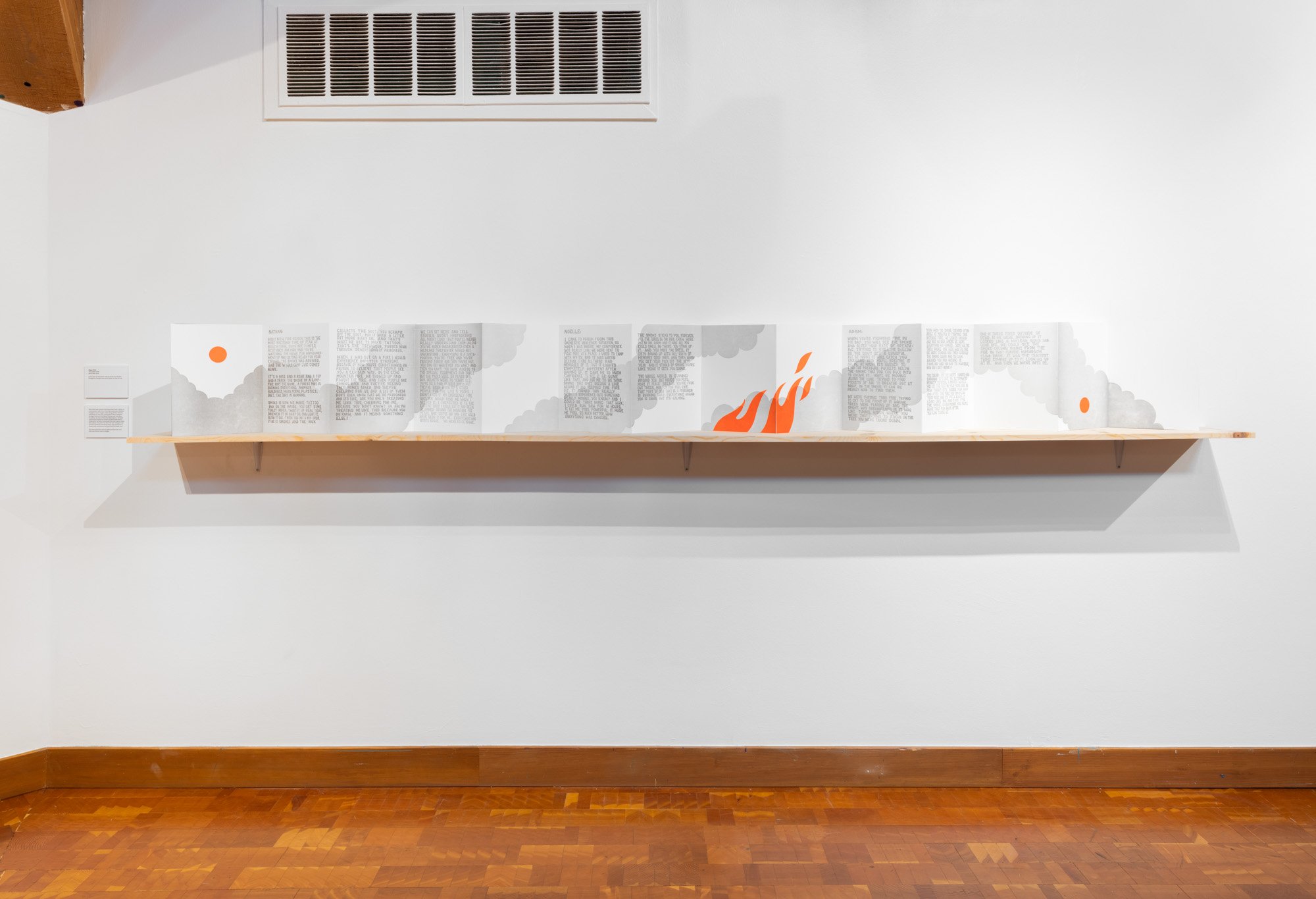
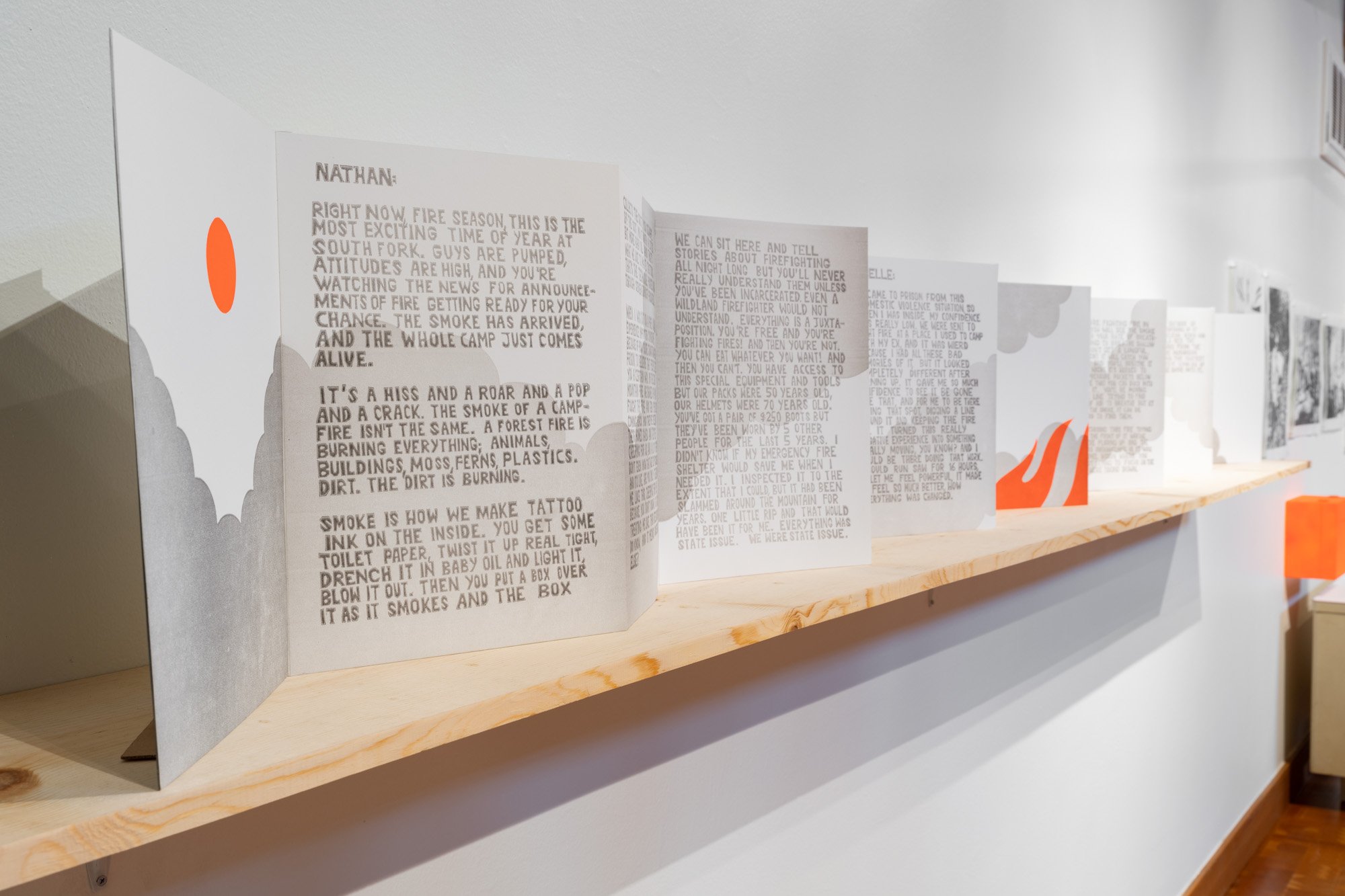
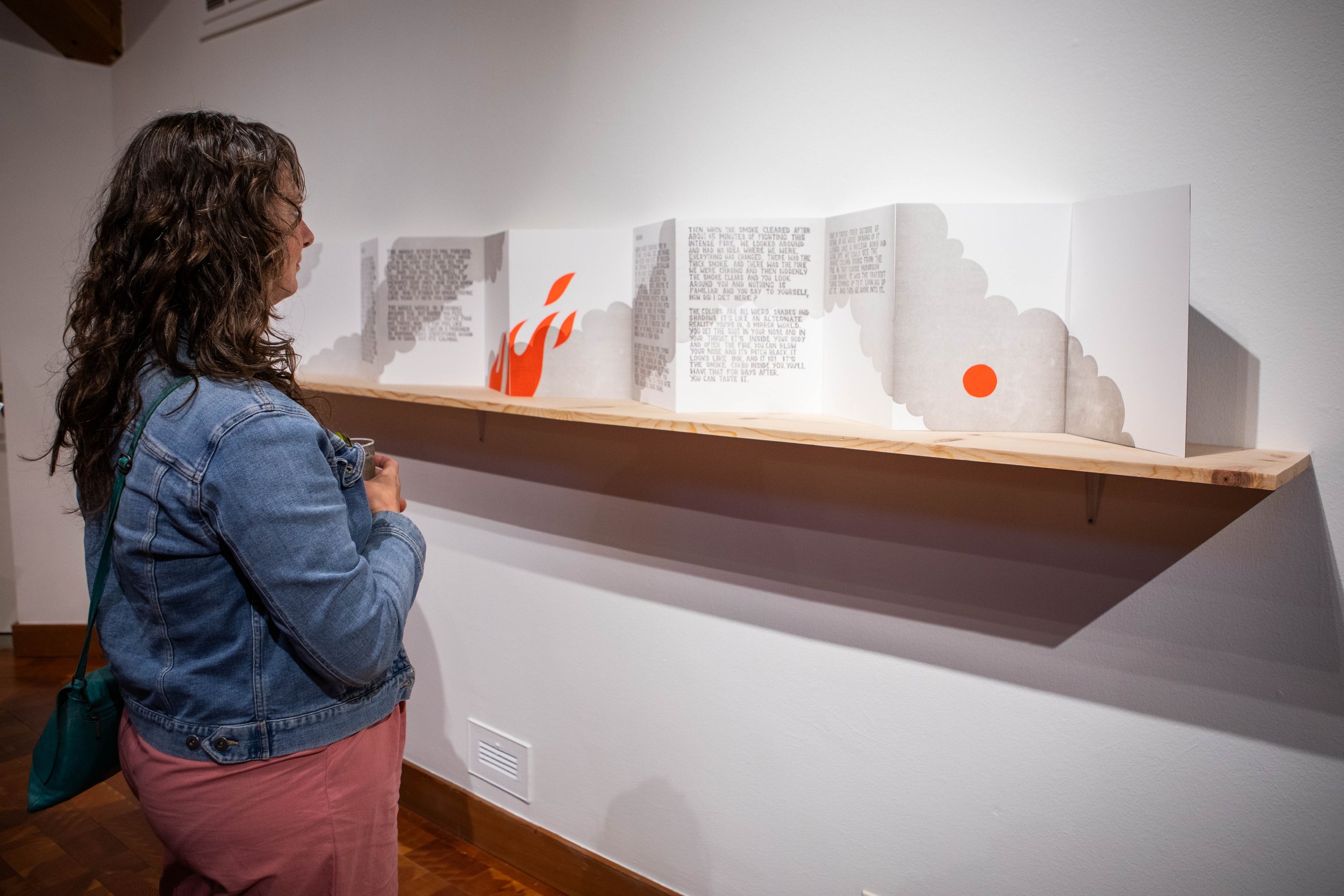
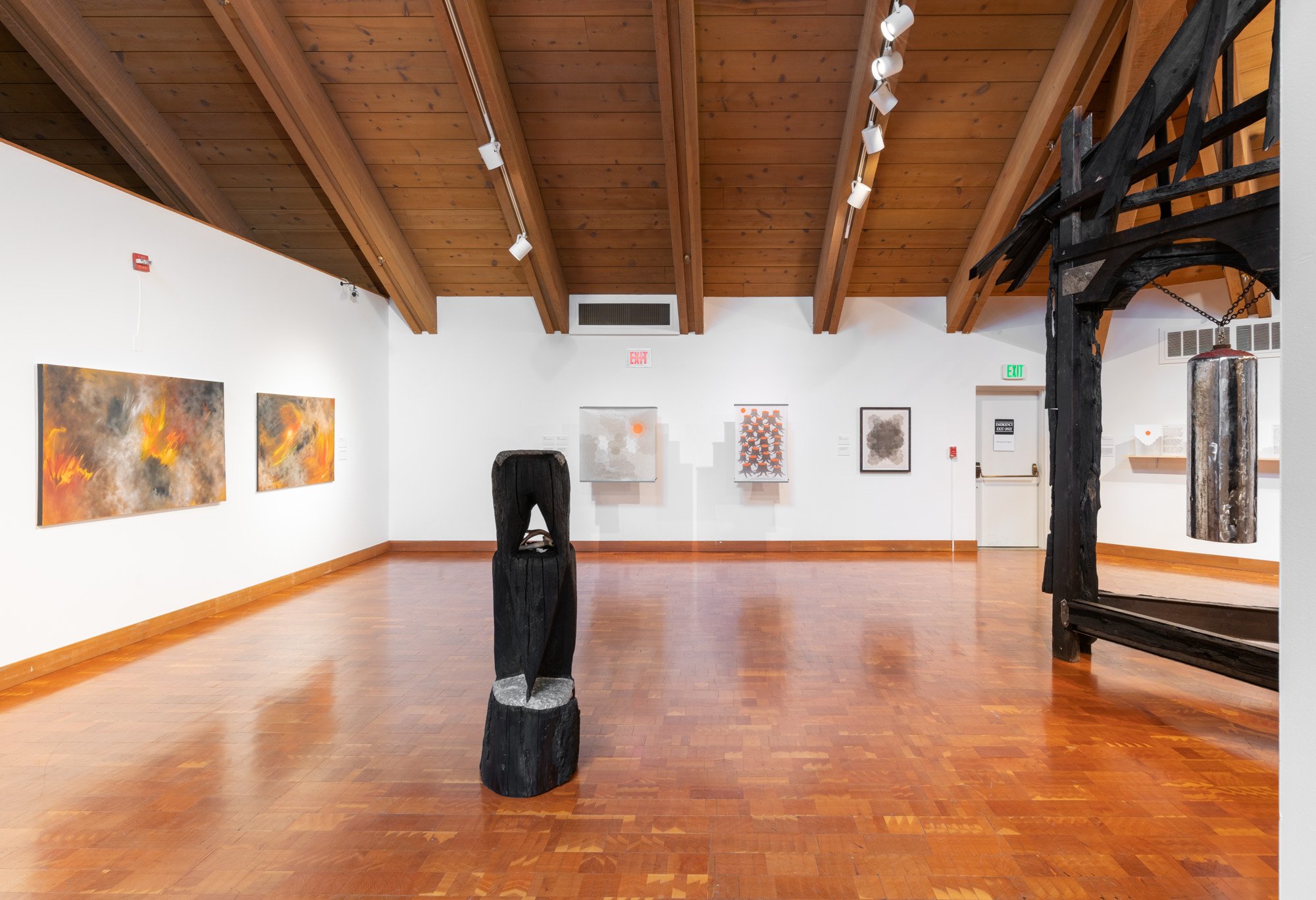

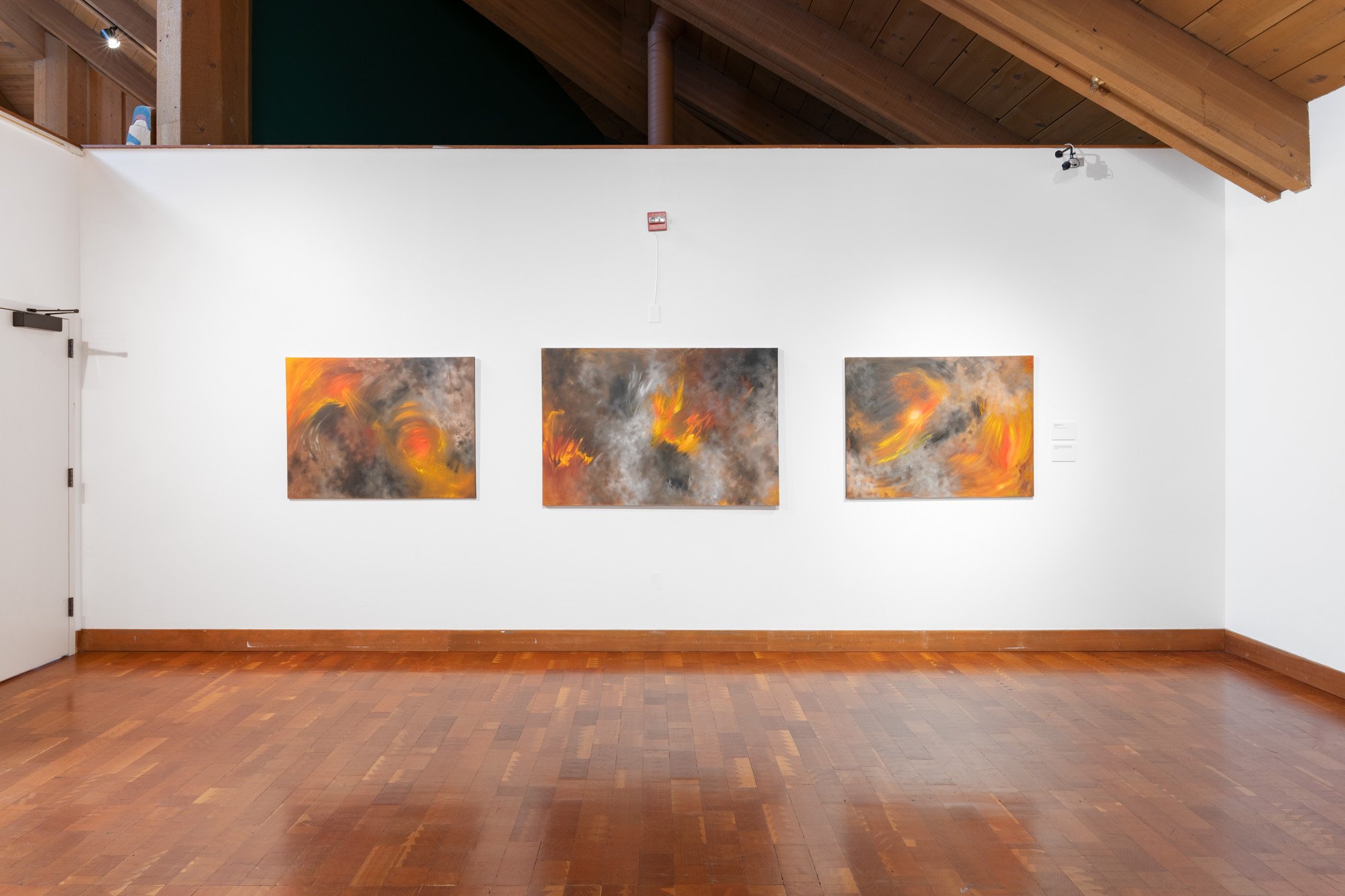
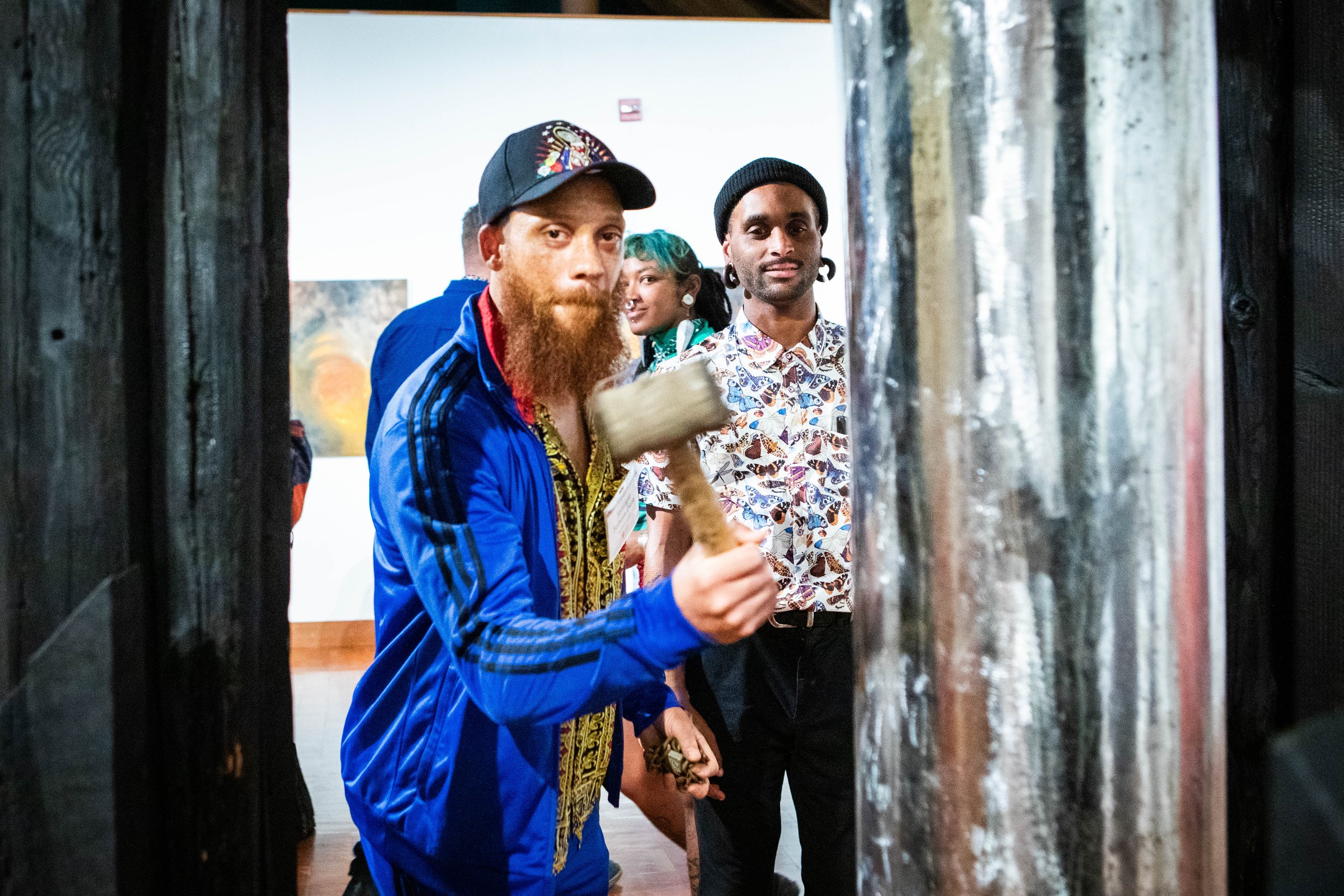
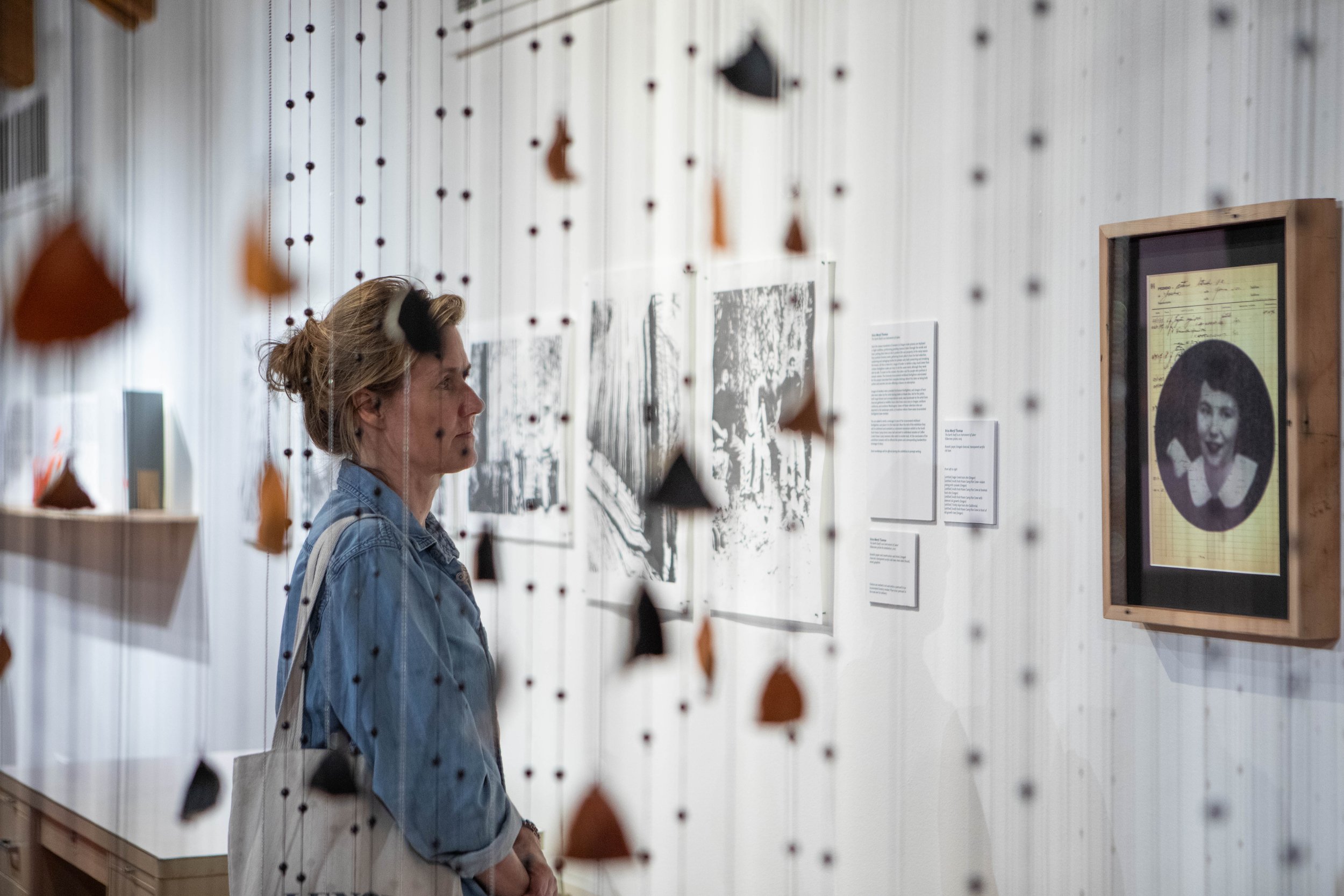
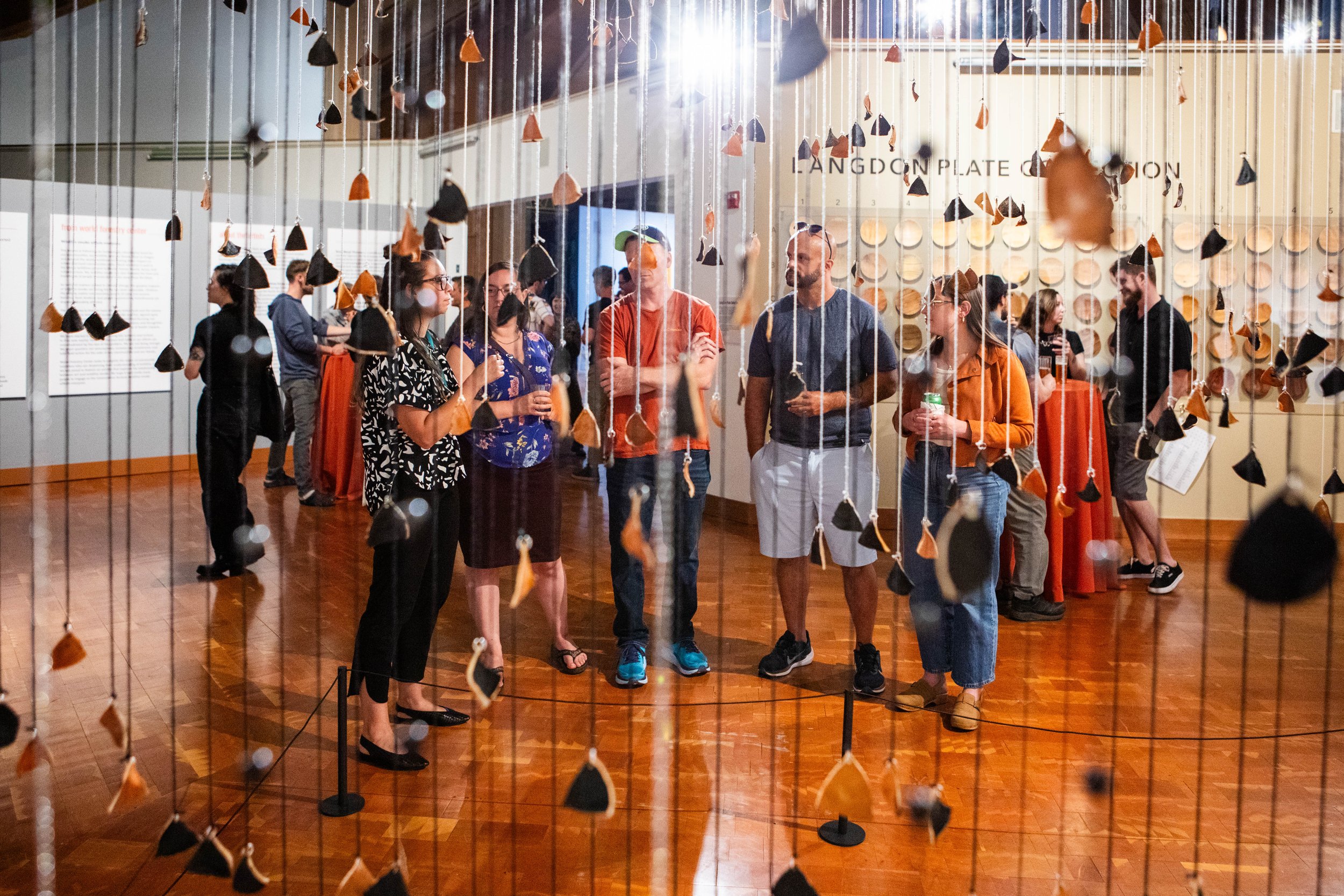
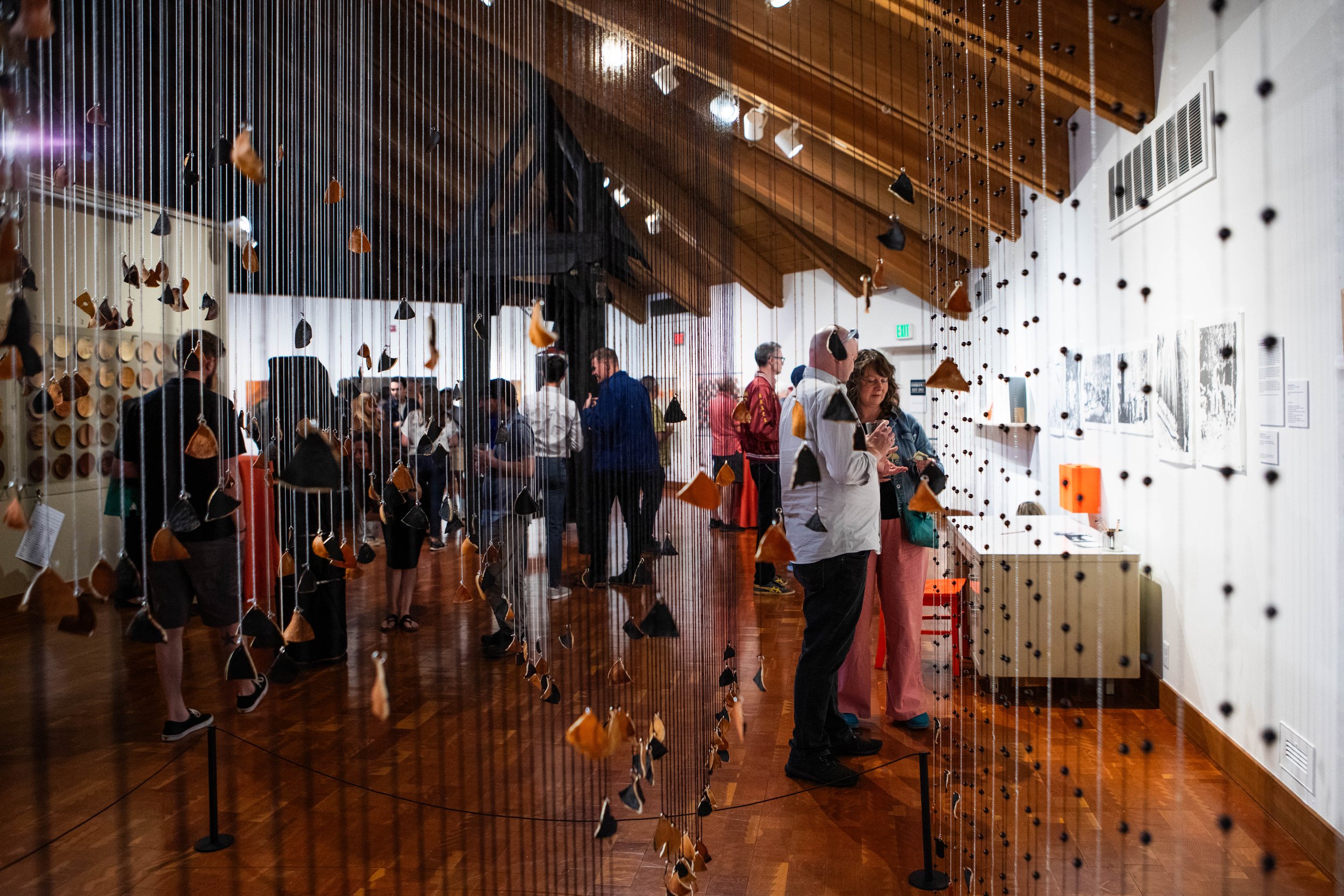


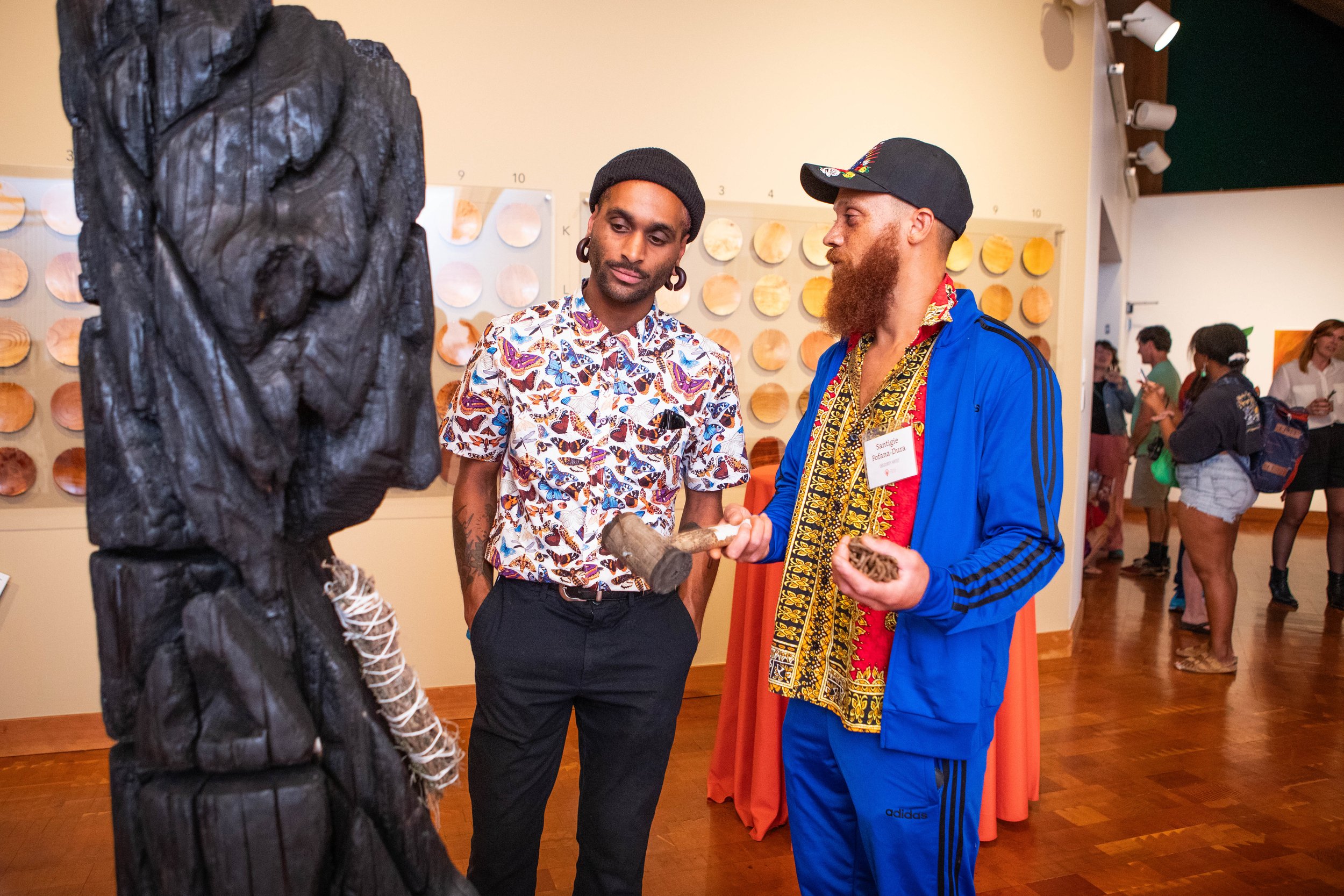

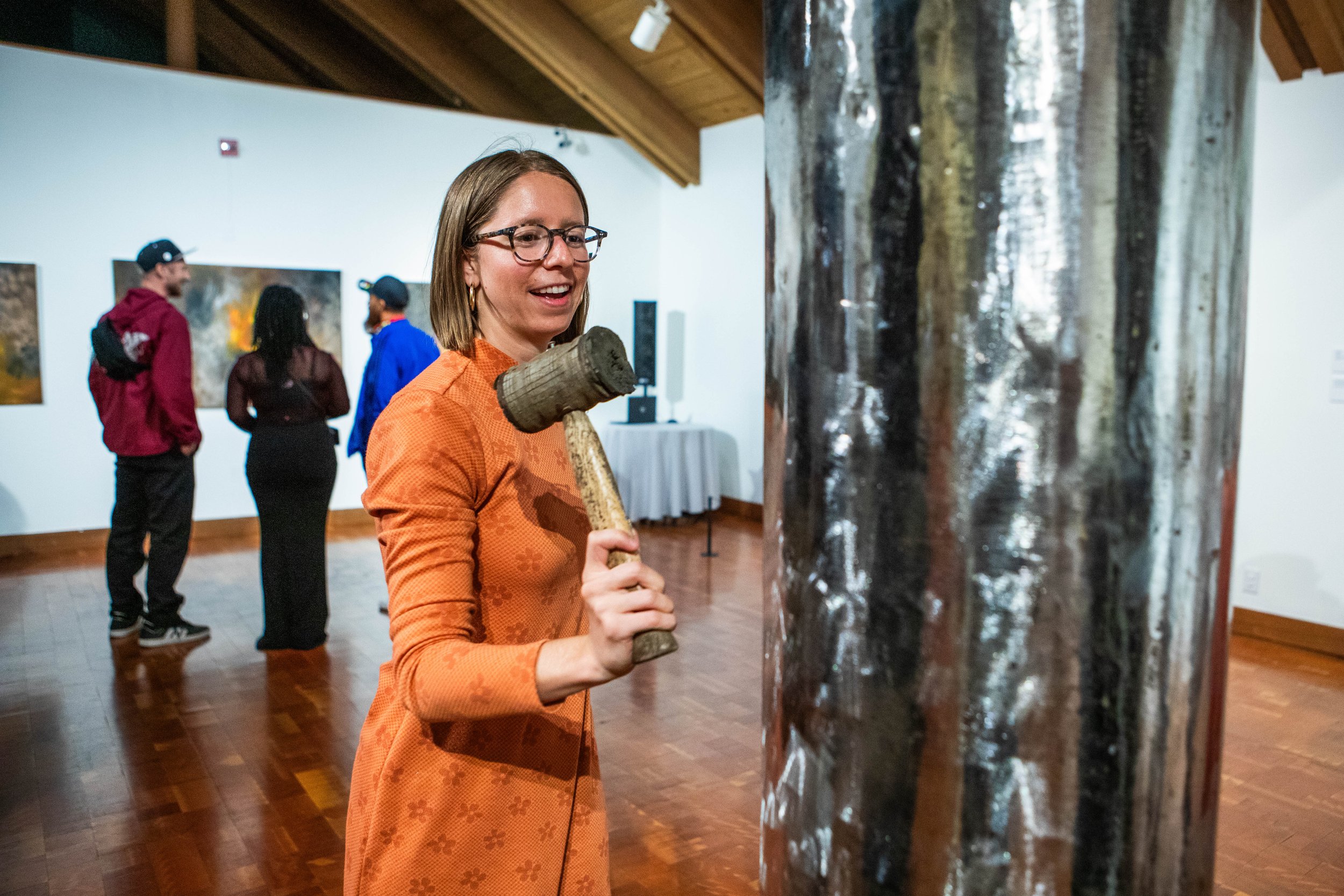
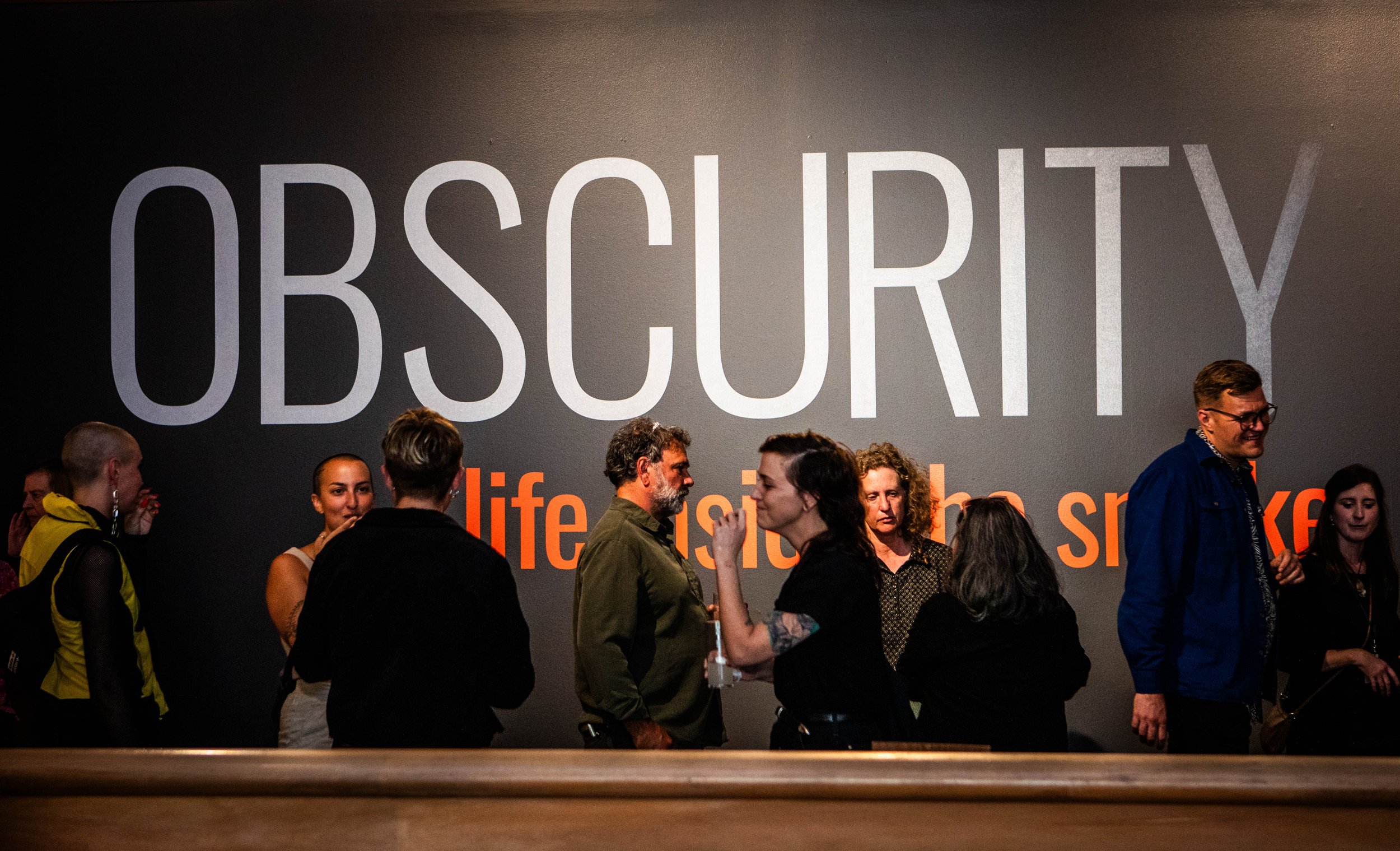
Curatorial Statement
The seasonal arrival of wildfire smoke affects communities across our region. At the height of fire season, anyone who spends time outside knows that the forests are burning, and almost everyone has the sense that things are getting worse. The smoke permeates our lives and livelihoods, and makes us all aware of the new reality that we are struggling to understand.
Wildfire smoke makes it hard to tell what is going on; it obscures what is happening. At the same time it is intimately with us: in our hair, in our clothes, and in our lungs. Smoke enters and occupies our homes, our communities, and our streets.
Scientific consensus holds that human-caused global warming is one of the reasons that wildfire smoke is getting more intense. Other causes of catastrophic fire and smoke are less familiar; a century of strict fire suppression has built up available fuel, and the intrusion of the built environment into previously wild land has changed the chemical composition of the smoke released when those places burn. The cultural logic that views forests as sources of commodities makes it difficult for our society to relate to those forests in less destructive ways. We reduce them to their monetary value in a process that mirrors the way that fire turns them into smoke. Smoke is a specter, come to remind us that we have to find a new way to live with the forests that surround us.
We know that natural and human-started wildfires (and the smoke that follows them) have been present in the forests of the American West for thousands of years. The indigenous peoples that have stewarded these landscapes for millennia have well-developed and practical cultures of burning to shape landscapes, promote forest health, and secure access to traditional foods. In early accounts of the region’s European colonization, settlers describe the landscape as being shrouded in smoke for half the year. There was a time, then, when smoke meant something different than it means now.
Through new work by six Portland-based artists, this show examines what we know and think we know about wildfire smoke, and how it makes us feel. We want to imagine how our relationship with smoke and fire might look in the future, and how we can respond collectively to the presence of smoke in our lives and the fires that put it there.